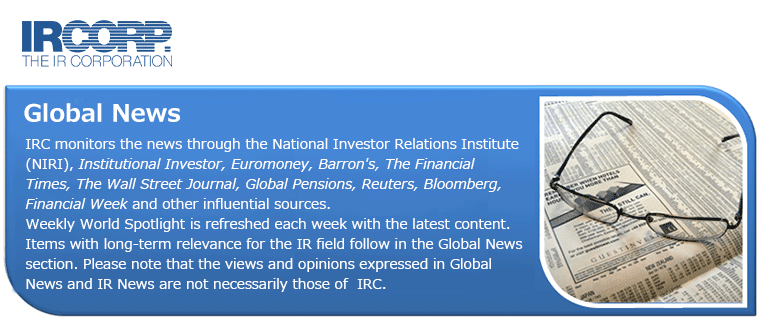Euromoney (December Issue)
We might be in line for some tasty economic porridge in 2013. “The US, Japan and Europe will be too cold next year. Manufacturing from emerging economies might be too hot. The result, though, might be just right.” World GDP could expand at 3% with industrial output up 5% or more. “Like Goldilocks’ porridge—growth is warm enough to reduce defaults and produce cashflow to service debt, but not too hot to spark inflation and a massive bond sell-off.”
We might be in line for some tasty economic porridge in 2013. “The US, Japan and Europe will be too cold next year. Manufacturing from emerging economies might be too hot. The result, though, might be just right.” World GDP could expand at 3% with industrial output up 5% or more. “Like Goldilocks’ porridge—growth is warm enough to reduce defaults and produce cashflow to service debt, but not too hot to spark inflation and a massive bond sell-off.”
Tags: 2013, Economic forecast, Emerging economies, Europe, GDP, Industrial ouput, Inflation, Japan, Manufacturing, U.S.
The Economist (August 6)
“Emerging economies now have greater heft on many measures than developed ones.” The Economist takes a look and finds some surprises. “The combined output of the developing economies accounted for 38% of world GDP (at market exchange rates) in 2010, twice its share in 1990…. it could exceed the developed world’s within seven years. If GDP is instead measured at purchasing-power parity, which takes account of the fact that lower prices in poorer countries boost real spending power, emerging economies overtook the developed world in 2008 and are likely to reach 54% of world GDP this year. Even more impressive, they accounted for three-quarters of global real GDP growth over the past decade.”
“Emerging economies now have greater heft on many measures than developed ones.” The Economist takes a look at emerging economies and finds some surprises. “The combined output of the developing economies accounted for 38% of world GDP (at market exchange rates) in 2010, twice its share in 1990…. it could exceed the developed world’s within seven years. If GDP is instead measured at purchasing-power parity, which takes account of the fact that lower prices in poorer countries boost real spending power, emerging economies overtook the developed world in 2008 and are likely to reach 54% of world GDP this year. Even more impressive, they accounted for three-quarters of global real GDP growth over the past decade.”


